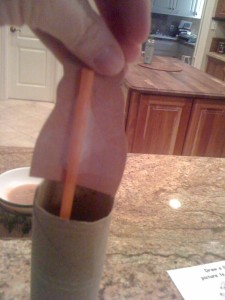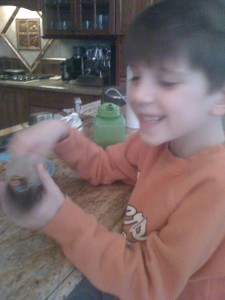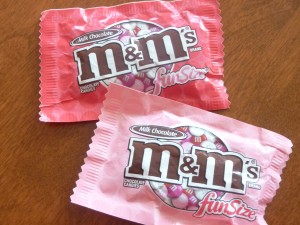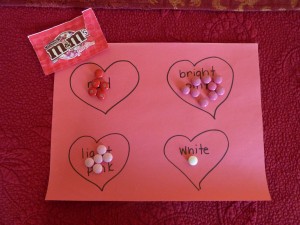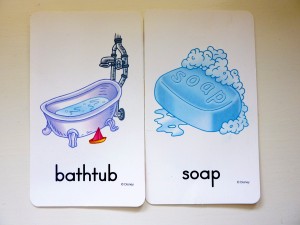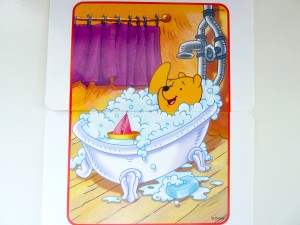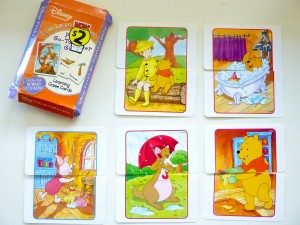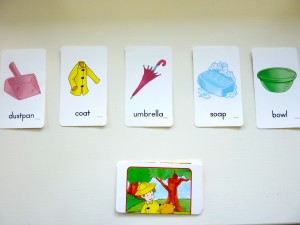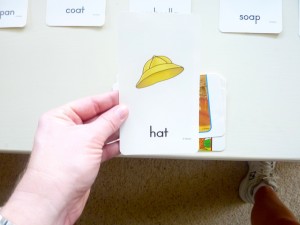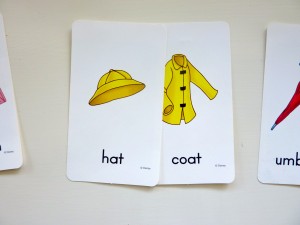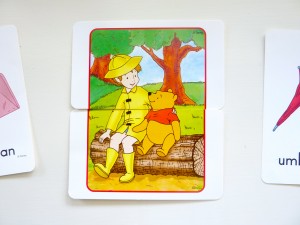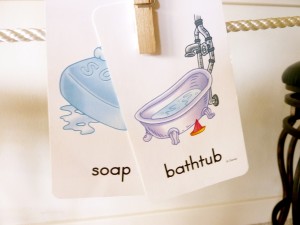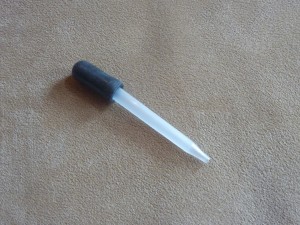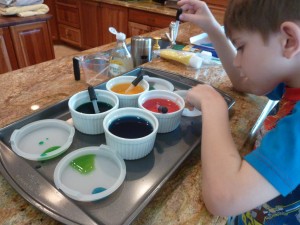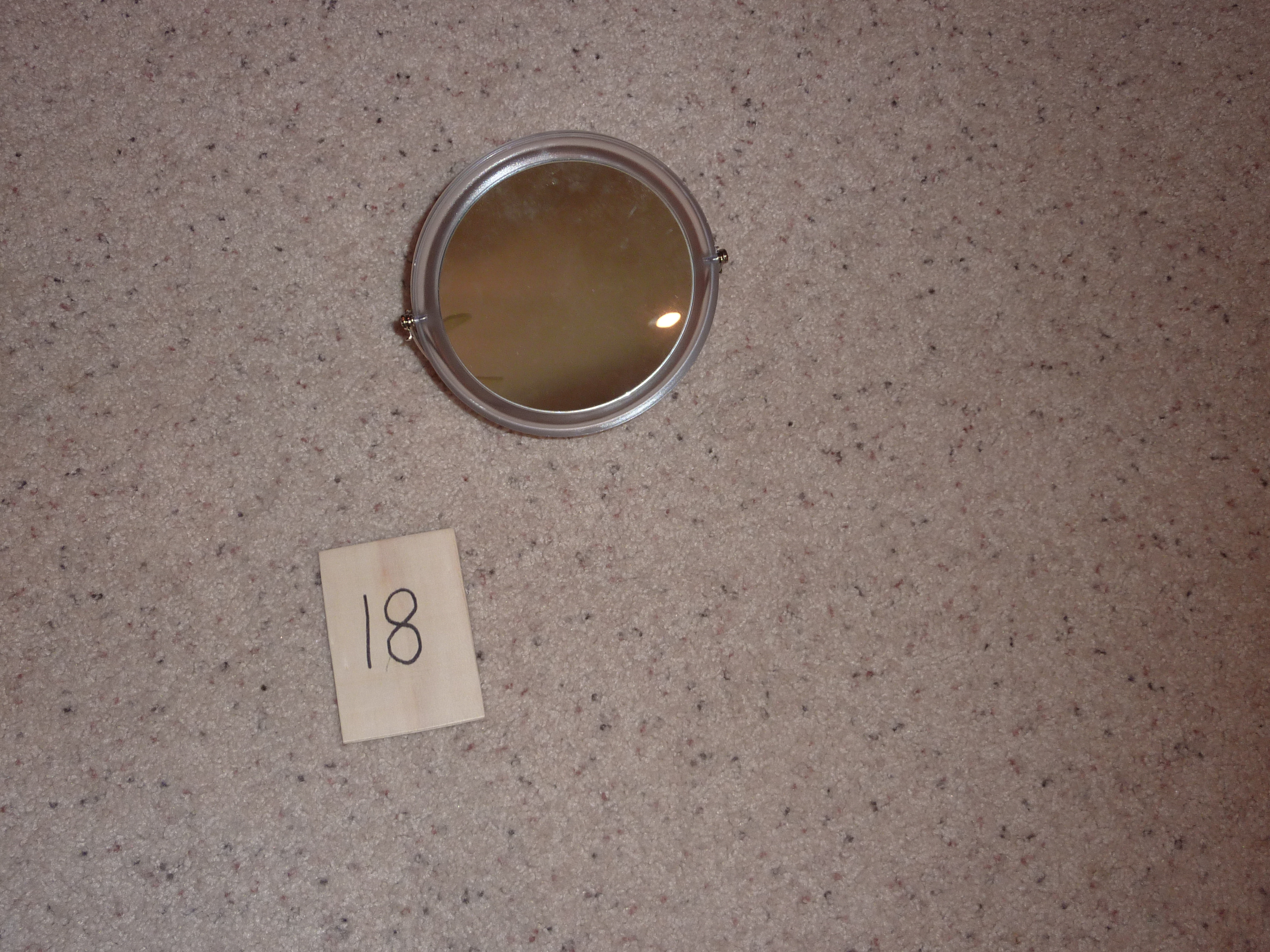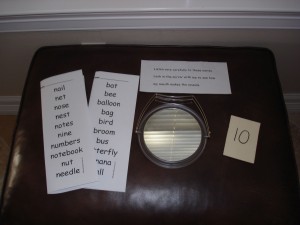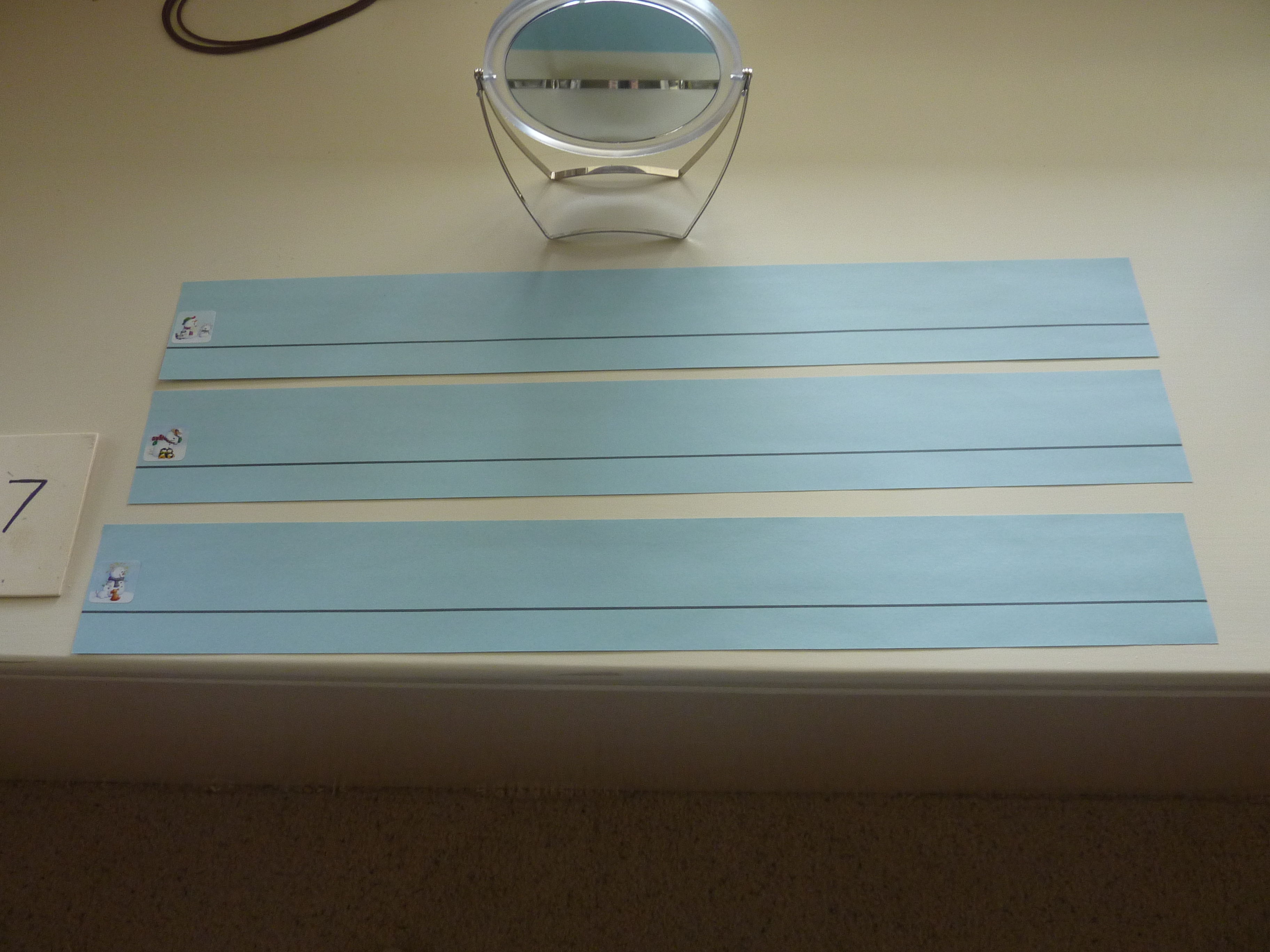Most young children spend a great deal of time in the bathtub playing and while they are playing, they are building skills that will help them later on. Andrew enjoyed hanging out in the tub, but he kind of did just that – he hung out in the tub, floating around, holding his breath under water but he did not “play” in the tub the way I remember playing. For me this involved measuring cups, filling and pouring, transferring soapy water from one container to another.
One day, he was wanting to pour his red V8 Fusion juice into a cup and I reached for it to do it for him while he held the cup. Why did I do this? Because I’m a bad, controlling mom? I don’t believe so. I did it because he’d never poured juice at home, I wasn’t sure he could do it and I really didn’t want red juice all over the floor. I got to thinking about this, felt kind of bad that I didn’t let him try but decided that I would give him more opportunities to build his pouring skills without involving my nervousness.
Providing Opportunities To Build Pouring Skills
I gathered up some old cups, little watering cans, and Tupperware containers for the bathtub and showed him how he could fill and pour using those tools. Sometimes I need reminders that just because he wasn’t ready for a certain play skill earlier, doesn’t mean he won’t be ready for them later. Â He wanted to pour and was using his “kid power” to meet his own wants. (“Kid power” (as described by Occupational Therapist Julie Kraska, who we saw for an evaluation years ago) is when a child wants to exert his/her independence and has the “I can do this by myself” attitude. Andrew was always very cautious and needed me nearby (probably because I could understand him when no one else could) so we hadn’t really seen his “kid power” attitude emerge until this past year.)
I was excited about this and decided to add it as a My Obstacle Course station so he could practice it in a more real life situation. He wasn’t expecting this at all, tilted his head a bit and gave a huge smile. He LOVED it!!
My Obstacle Course Station Activity: Â Pouring Water Into Muffin Tin

This station activity took about 2 minutes to gather materials and set up – I love activities like this! It was February so I used a heart-shaped silicone muffin tray that I found in the dollar section of Target. Â I used my rimmed cookie sheet to catch any stray water and also set out a towel in case his hands got wet. (It always interests me that he can spend hours in the shower, tub or pool but dislikes having water on his skin other times.)
We used a liquid measuring cup and filled it with water. Â First we added red food coloring to make red water and when that was empty, we got some more water and added blue food coloring to make blue water. (You could leave out the food coloring if you want but I like how it provides a visual contrast between the muffin tin and the water.) Â I set out a spoon and a measuring spoon for him to experiment with those as well.
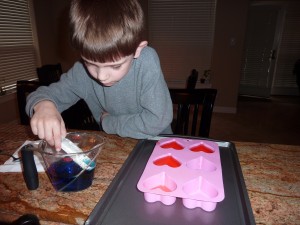
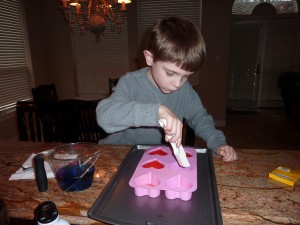
He had so much fun, beginning very cautiously, not wanting to let any spill to feeling confident enough to pour right from the measuring cup into the hearts.
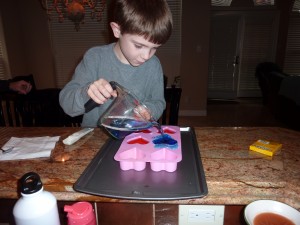
After that, we worked on how to tilt the cup back when the liquid got near the top so it wouldn’t spill over but it wasn’t a big deal because of the cookie tray underneath.
So Basic Yet So Fun!
It was really fun to be able to work on this skill with him in a playful, stress free way. This was an activity designed for him to be able to just experiment and enjoy building his pouring skills. It was a great play station because we did not need to have an exact amount of liquid poured into something like you do when cooking or baking. Â He had an absolute blast and we’ve done this many more times with different kinds of muffin and bread tins. I’ve seen a huge improvement in not only his ability to pour but his confidence while doing it as well.
Engage, Encourage and Empower!


